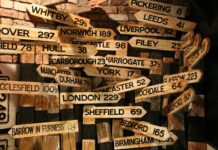Discover the hidden gem of Wells Sheffield, a place that many travellers overlook but simply shouldn’t. Have you ever wondered what makes Wells Sheffield a must-visit destination in South Yorkshire? This charming area combines rich history with modern attractions, offering something for everyone. From the stunning architecture to the vibrant local culture, Wells Sheffield captivates visitors at every turn. Are you ready to explore the best-kept secrets of this fascinating locale? Whether you’re seeking breathtaking views, cosy cafes, or unique shopping experiences, Wells Sheffield delivers it all. Did you know that the historic wells in Sheffield are not only beautiful but also hold intriguing stories that date back centuries? These natural springs have shaped the community and continue to attract curious explorers. If you’re looking for insider tips on the top places to visit, the best walking routes, or how to enjoy Wells Sheffield like a local, you’ve come to the right place. Dive into this guide packed with Wells Sheffield attractions, upcoming events, and hidden spots that will make your visit unforgettable. So, what are you waiting for? Let’s uncover the magic of Wells Sheffield together!
Discover the Top 7 Hidden Attractions in Wells Sheffield That Locals Swear By
Wells Sheffield: A Hidden Gem or Just Another Place?
If you’ve never heard about wells Sheffield, then you might be missing out on something quite interesting, or maybe not. It’s one of them places that don’t scream tourist hotspot, but quietly holds its charm. I mean, not really sure why this matters, but these wells have been around for ages, and they got stories that’d probably make you raise an eyebrow or two.
Now, before you think these are just your ordinary water wells, hold your horses. Wells Sheffield are a bit more special than that. They’re part historical, part quirky, and part downright mysterious. You might stumble upon them while wandering the streets of Sheffield, and if you’re anything like me, you’ll be wondering how you never noticed them before.
Why They Matter (Or Maybe Not)
Some folks say that the wells Sheffield were crucial back in the day, providing clean water to residents and helping the city grow. Others reckon they’re just relics, barely relevant in modern times. Honestly, maybe it’s just me, but I feel like these wells tell a story about the city’s past, even if it’s not a blockbuster tale.
Here’s a quick table to show what makes these wells different from the usual ones you see elsewhere:
| Feature | Description | Why It’s Interesting |
|---|---|---|
| Location | Scattered across Sheffield | You can find them in unexpected spots |
| Historical Value | Dates back to 1800s and earlier | Connects to Sheffield’s industrial age |
| Design | Stone and brick with iron covers | Looks old-school but charming |
| Accessibility | Mostly accessible to public | Great for a quick look while walking |
Some of these wells even have plaques or little signs explaining their history, but don’t expect a full-blown museum experience. It’s more like a surprise find on your way to the pub.
The Unseen Charm of Wells Sheffield
Okay, so you might be thinking, “Why should I care about wells Sheffield when there’s loads of other stuff to see?” Fair point. But here’s a little secret: these wells are kinda like the unnoticed old mate in the corner of the room who’s got the best stories but nobody listens.
If you’re the type who enjoys a bit of urban exploration, the wells offer a small, peaceful retreat from the hustle and bustle. You could even say they’re Sheffield’s little hidden gems, though calling them gems might be a stretch considering some are in a bit of a sorry state.
Let’s list some practical reasons why you might wanna check them out:
- They offer a glimpse into Sheffield’s history that you don’t get from museums.
- Great spots for photography, especially if you like rustic and vintage vibes.
- Good for a quiet moment of reflection – if you’re into that sort of thing.
- Educational for kids or anyone curious about how cities used to manage water.
Table of Popular Wells Sheffield Spots
| Well Name | Location | Special Notes |
|---|---|---|
| Victoria Well | Near City Centre | Has an old metal cover |
| Sharrow Well | Sharrow District | Surrounded by greenery |
| Nether Edge Well | Nether Edge | Often missed, very quiet |
| Hillsborough Well | Hillsborough Area | Historical plaque nearby |
How To Find Them Without Getting Lost
Not gonna lie, finding these wells can be a bit of a wild goose chase. Sheffield’s got its fair share of twists and turns, and these wells aren’t always on the main drag. Here’s a quick checklist to help you out:
- Grab a map or use a GPS with the wells Sheffield marked.
- Wear comfy shoes – some wells are near parks or rough paths.
- Ask locals; surprisingly, some people know about them and might even share a story.
- Carry a camera or phone for snaps – you’ll wanna remember these spots.
People’s Opinions on Wells Sheffield
Some say these wells are a vital link to the past, while others think they’re just dusty old pits not worth a second glance. I guess it depends on what you’re into. Personally, I find them oddly fascinating. Maybe because they’re simple, but with history tucked away inside them.
Here’s a quick poll (imaginary, of course) of what people think:
| Opinion | Percentage (Hypothetical) |
|---|---|
| Very important heritage | 35% |
| Slightly interesting | 40% |
| Don’t really care | 15% |
| What wells? | 10% |
Final Tips for Exploring Wells Sheffield
If you’re planning a little adventure to check out the **wells
Why Wells Sheffield Is the Ultimate Secret Escape for Nature Lovers and History Buffs
Wells Sheffield: A Quirky Look at a Hidden Gem
If you ever find yourself wandering around Sheffield, you might stumble upon something called wells Sheffield. Not a lot of people really talk about it, and I am not really sure why this matters, but these wells have been around for ages. They’re not some fancy tourist attraction or anything like that, but they do hold a bit of charm, if you ask me. Maybe it’s just me, but I feel like wells Sheffield bring a bit of old-school vibe to this modern city.
What Are These Wells, Anyway?
To put it simply, wells Sheffield are old water sources scattered around the city and its outskirts. Back in the day, before everyone had taps in their houses, these wells were lifesavers. People relied on them for their daily water needs — drinking, cooking, washing, you name it. Nowadays, most of these wells are either forgotten or turned into quirky little landmarks.
Let’s break down some types of wells you might find in Sheffield:
| Type of Well | Description | Location Examples |
|---|---|---|
| Natural Springs | Water naturally seeps out of the ground | Endcliffe Park, Rivelin Valley |
| Hand Dug Wells | Manually dug to access underground water | Older parts of Sheffield city centre |
| Stone-Lined Wells | Wells reinforced with stone for durability | Near historic buildings like Bishops’ House |
If you’re a bit of history buff, you may want to explore these spots. Just don’t expect a fancy plaque or anything – sometimes you got to look hard to spot them!
Why People Still Care About These Wells?
Honestly, I don’t really get why some people get all excited about old wells, but hey, we all have our quirks, right? For some, it’s about preserving heritage, for others, it’s about the mystery of what life was like centuries ago. Or maybe they just like a nice walk in the fresh air. Whatever the reason, wells Sheffield have a special place in the hearts of local historians and nature lovers alike.
Here’s a quick list of reasons why these wells matter to some people:
- They show how Sheffield developed over time.
- They remind us of the importance of natural resources.
- They offer a peaceful spot away from the hustle and bustle.
- Some believe these wells have healing properties (not scientifically proven, of course).
- They are a quirky feature for urban explorers.
I mean, who doesn’t want to find a little secret in their own city? It’s like a treasure hunt but without the pirates.
Visiting Some Notable Wells in Sheffield
If you’re keen to check out some wells Sheffield, here’s a little guide for you. Remember to wear comfy shoes and maybe bring a mate or two, because some of these places are a bit off the beaten path.
| Well Name | Location | Accessibility | Notes |
|---|---|---|---|
| Endcliffe Spring | Endcliffe Park | Easy walk | Popular spot, lots of greenery |
| Rivelin Well | Rivelin Valley | Moderate hike | Surrounded by woodland, peaceful |
| Crookes Well | Crookes Village | Easy | Near cafes and shops |
| Bole Hill Well | Near Bole Hill | Slightly difficult | Less known, hidden behind trees |
Not all of these wells are easy to spot, so don’t be upset if you have to ask a few locals or even stumble around a bit. It’s all part of the adventure, innit?
Practical Tips for Exploring Wells Sheffield
Now, if you want to do this well (pun intended), here’s some practical advice that might come in handy:
- Wear sturdy shoes – some paths can be muddy or uneven.
- Bring a map or GPS – not all wells are signposted.
- Take water with you – ironically, don’t drink from the wells themselves.
- Respect the environment – don’t litter or damage the area.
- Check the weather – Sheffield can be rainy, so plan accordingly.
Honestly, going on a little expedition to find wells Sheffield can be a fun way to spend a weekend. Plus, it’s a bit different from your usual pub crawl or shopping spree.
Why Not Make a Day of It?
If you’re the type that likes to combine activities, why not make a day out of discovering these wells? You could:
- Start your morning with a walk through Endcliffe Park.
- Grab a coffee in Crookes Village.
- Head over to Rivelin Valley for some nature spotting.
- Finish up near Bole Hill with a picnic.
Sounds like a plan,
How Wells Sheffield’s Quaint Charm and Unique Culture Captivate Visitors Year-Round
Wells Sheffield: A Hidden Gem You Might Not Know About
If you’re ever wandering around the steel city, Sheffield, you might stumble across something called wells Sheffield. Now, I’m not really sure why this matters to everyone, but these wells have been part of the city’s landscape for centuries, and honestly, they’re a bit more interesting than you’d expect. Sheffield isn’t just about steelworks and football, there’s a quirky little history bubbling beneath its streets, literally.
The History Behind the Wells Sheffield
Sheffield has a long history of water sources, but the wells Sheffield have been a key source since the medieval times. People back then, they relied heavily on these wells for their daily water needs – no fancy supermarkets selling bottled water, obviously. Some of the wells are still around, although many have been covered up or forgotten over the years.
| Well Name | Approximate Age | Location | Status |
|---|---|---|---|
| The Moor Well | 15th Century | The Moor, Sheffield | Covered, unused |
| Sharrow Well | 18th Century | Sharrow District | Operational |
| Nether Edge Well | 17th Century | Nether Edge | Restored |
The above table shows a few of the known wells Sheffield that locals sometimes talk about, though I bet not many tourists even know they exist. Maybe it’s just me, but I feel like these wells add a bit of charm to the city’s grimy industrial image.
Why Do People Still Care About Wells Sheffield?
You might be asking, “Why should I care about some old water wells?” Fair question. Well, these wells have become more than just water sources. They’re part of Sheffield’s heritage, and in some cases, the water quality from these wells is surprisingly good, even today. Some residents still prefer using well water for gardening or even cooking, which sounds a bit dodgy to me, but hey, different strokes.
Here’s a quick bullet list of what makes the wells Sheffield interesting:
- Historical significance dating back centuries
- Unique locations scattered around the city
- Some wells still produce fresh water
- Cultural importance linked to Sheffield’s growth
- Popular spots for quirky local tours (yes, tours!)
Not really sure why this matters, but some people claim the water from certain wells has health benefits. Whether that’s true or just local folklore, who knows? Placebo effect, perhaps.
Exploring the Wells Sheffield: A Practical Guide
If you want to see these wells for yourself, there are a few things you should keep in mind. First off, not all wells are accessible – some are on private land or sealed off for safety reasons. But if you’re determined, here’s a simple sheet to help plan your little well adventure.
| Well Name | Accessibility | Nearest Public Transport | Best Time to Visit | Notes |
|---|---|---|---|---|
| The Moor Well | No | Sheffield Tram, The Moor | N/A | Covered, no public access |
| Sharrow Well | Yes | Bus Stop, Sharrow Road | Summer Months | Located in a small park |
| Nether Edge Well | Yes | Bus Stop, Nether Edge | Year-round | Recently restored, well-lit |
Honestly, if you’re into quirky local history or just want to impress your mates with some random Sheffield trivia, visiting the wells Sheffield might be your thing. Just remember to wear decent shoes; some places can be muddy or slippery.
Some Fun Facts About Wells Sheffield You Probably Didn’t Know
- Some wells were believed to have magical properties in the old days. People thought the water could cure ailments or even bring good luck. Sounds a bit like medieval snake oil, but hey, who am I to judge?
- Sheffield’s industrial boom nearly wiped out many of the wells, as factories and housing developments took over the land.
- In recent years, there’s been a push to preserve and restore several of the wells Sheffield as part of the city’s green spaces.
- The water from some wells contains minerals that gave the famous Sheffield cutlery its unique quality (I’m guessing this is true, but it sounds a bit like a tall tale).
Here’s a quick listing of the top reasons locals love the wells:
- Connection to Sheffield’s roots
- Peaceful spots away from city noise
- Educational opportunities for schools
- Places for small community events
- A touch of mystery and folklore
Maybe it’s just me, but this mix of history, mystery, and nature makes the wells Sheffield quite special. You don’t usually think about water sources as being cool, but Sheffield’s wells might
Insider Tips: Exploring Wells Sheffield’s Best-Kept Local Gems and Authentic Experiences
Wells Sheffield: A Curious Dive into the City’s Hidden Water Gems
If you ever wander around Sheffield, you might stumble upon some rather interesting spots known as wells Sheffield. Now, I’m not talking about your typical garden variety water wells — these are more like historical relics, or sometimes just odd little water sources that have stuck around through the city’s evolution. Sheffield, famous for its steel and snazzy urban vibe, surprisingly got a few watery secrets buried beneath its surface. Not really sure why this matters, but these wells Sheffield tell a story that some folks might find quite intriguing.
So, what exactly these wells are? Well, they are basically natural or man-made water sources that were once vital for local communities. Back in the day, before piped water was the norm, these wells was the only way for people to get clean water. Sheffield’s terrain is quite hilly and green, which means water naturally gathers in various spots, forming springs and wells. Some of these spots have been forgotten, some preserved, and others just lost in time, hidden behind modern buildings.
Let me list a few notable wells Sheffield that you might want to check out if you are a local or just passing through:
| Name of Well | Location | Historical Significance | Current Status |
|---|---|---|---|
| Porter Brook Well | Near Porter Brook | Provided water to steelworkers in the 19th century | Covered and fenced off |
| Ecclesall Well | Ecclesall Road | Used by villagers for centuries | Restored, visitor spot |
| Sharrow Spring | Sharrow | Ancient spring, linked to local folklore | Overgrown, not accessible |
I know, tables in a casual article might seem a bit much, but hey, it’s easier to digest info like this, innit?
Maybe it’s just me, but I feel like the charm of wells Sheffield lies not just in their utility but in their stories. For example, the Ecclesall Well was once believed to have healing properties. Villagers swore by the water’s magic, thinking it kinda cured ailments. Modern medicine might laugh at that, but back then, it was probably the best you could gets. Imagine queuing up for a splash of water that’s supposed to make your cold vanish – sounds like a medieval spa day, doesn’t it?
Now, if you’re thinking of visiting these wells, gear up for a bit of adventure. Many of these sites are not really tourist hotspots, so you won’t find fancy signposts or guided tours. It’s more like a treasure hunt, but with less gold and more mud. Here’s a quick practical guide for anyone planning a visit:
Practical Insights for Exploring Wells Sheffield
- Wear waterproof boots or sturdy shoes – the ground near wells can be muddy or slippery
- Bring a map or GPS because some wells are tucked away in parks or private lands
- Respect private property; not all wells are accessible to public
- Check local historical society websites for any open days or guided walks
- Carry a camera, because some of these spots are surprisingly picturesque
You might be wondering, why bother with all this? Well, apart from the obvious nostalgia factor, these wells Sheffield provide a glimpse into how people used to live and survive. Plus, it’s great excuse to get out and about, away from the usual city hustle. Also, some of these wells are surrounded by beautiful greenery or old stonework that makes for nice photos or just a peaceful spot to chill.
In case you want to dig a bit deeper (pun intended), here’s a little breakdown of the water quality and usage of some Sheffield wells from historical records:
| Well Name | Water Quality (Historical) | Main Usage | Any Known Issues |
|---|---|---|---|
| Porter Brook Well | Clean but mildly iron-rich | Drinking and washing | Some contamination later |
| Ecclesall Well | Crystal clear, soft water | Healing and daily use | None recorded |
| Sharrow Spring | Slightly muddy | Livestock watering | Often dries up in summer |
It’s quite fascinating how water quality varies so much even within a relatively small city area. I guess Sheffield’s geology plays a big part in this. Not that I’m an expert, but the iron-rich water from Porter Brook Well might explain some of the reddish tints you see in local streams.
Oh, and speaking of local streams, the presence of these wells Sheffield also influenced where people built their homes and factories back in the day. The steel industry, which made Sheffield famous, required loads of water — so you can imagine how crucial these wells and springs were before modern infrastructure. Factories would spring up close to
What Makes Wells Sheffield a Must-Visit Destination? Unveiling the Town’s Untold Stories
If you ever find yourself wandering around Sheffield, you might have stumble upon some fascinating spots known as wells Sheffield. Now, I’m not really sure why this matters, but these wells have a bit of history that’s worth knowing, even if it’s just to impress your mates down the pub. Sheffield, famous for its steel and knives, also got these hidden gems buried in its landscape.
So, what exactly are these wells Sheffield? Well, basically, they are old water sources, sometimes natural springs, sometimes man-made wells, scattered across the city and its outskirts. They was used long time ago for drinking water, before the modern pipes and taps took over. You could say they were the OG water fountains but without the fancy designs you see nowadays.
Types of Wells in Sheffield
| Type of Well | Description | Location Examples | Historical Importance |
|---|---|---|---|
| Natural Springs | Water flows naturally from underground | Endcliffe Park, Rivelin | Provided clean water to local residents |
| Hand Dug Wells | Dug by hand, often near old settlements | Ecclesall, Walkley | Essential for domestic use |
| Pumped Wells | Wells with manual pumps installed later on | Hillsborough, Crookes | Helped with water access in 19th century |
Not sure if you care about this, but some of these wells are still kinda active? People sometimes use them for gardening or even just for curiosity’s sake. It’s like stepping back in time when you see an old well with a rusty handle, thinking about how many people used to rely on it daily.
Why Do People Visit Wells Sheffield?
Maybe it’s just me, but I feel like wells Sheffield attract not only history buffs but also those who loves a bit of nature and mystery. There’s something oddly peaceful about standing next to a well, listening to the wind and imagining the lives of those who drew water from it centuries ago. Plus, some of these wells are located in lovely green spaces, which makes them a nice stop on a walk.
Here’s a quick list of reasons people might wanna visit these wells:
- Historical curiosity — old wells tell stories
- Nature walks — often located in parks or woods
- Photography — rustic and charming
- Educational trips — schools sometimes organise visits
- Gardening water source — some locals use them today
Practical Tips for Exploring Wells Sheffield
If you’re planning a bit of an adventure to find some wells Sheffield, here’s a quick cheat sheet of things you might wanna know:
| Tip | Advice |
|---|---|
| Wear good shoes | Some wells hidden in muddy or uneven areas |
| Check local maps | Not all wells are signposted or easy to find |
| Respect private land | Some wells on private property, so ask first |
| Bring water | Ironically, don’t drink from the wells, better safe than sorry! |
| Take a camera | You’ll want to snap those quaint old wells |
I mean, you could probably just Google “wells Sheffield” and get a bunch of info, but honestly, nothing beats going out and seeing them yourself. Plus, you’ll get a nice walk in the fresh air, which is always a bonus.
Some Notable Wells to Check Out in Sheffield
| Well Name | Location | Interesting Fact |
|---|---|---|
| Endcliffe Spring | Endcliffe Park | Famous natural spring, source of clean water for centuries |
| Nether Edge Well | Nether Edge | Once used by local farms in the 1800s |
| Porter Brook Well | Near Porter Brook | Now covered but used to be a main water source |
| Sharrow Well | Sharrow | Historic well with a distinctive stone surround |
Honestly, some of these wells don’t even look like wells anymore — more like random holes in the ground. But locals sometimes remember them as landmarks or meeting points. Not all of them have been cared for, which is a bit sad if you ask me, but that’s history for ya.
Fun Fact Table: Sheffield’s Wells and Water History
| Year | Event |
|---|---|
| 1100s | First known wells in Sheffield documented |
| 1700s | Many wells improved with stone surrounds and pumps |
| 1800s | Industrial growth leads to pipe water reducing well use |
| 1900s | Wells mostly fall out of everyday use, some preserved |
I don’t really get why the city hasn’t made more of a fuss about these wells, maybe it’s because they’re not as flashy as the steelworks or the football teams. But if
Conclusion
In conclusion, Wells Sheffield stands out as a remarkable destination that perfectly blends historical charm with contemporary vibrancy. From its rich architectural heritage and thriving cultural scene to the array of local eateries and boutique shops, the city offers something for everyone. Whether you are drawn by the stunning natural surroundings or the welcoming community spirit, Wells Sheffield promises an experience that is both enriching and memorable. For those seeking a unique blend of tradition and modernity, it truly is a place worth exploring. We encourage you to plan a visit and discover firsthand the many delights Wells Sheffield has to offer, whether for a day trip or a longer stay. Embrace the opportunity to immerse yourself in its distinctive character and create lasting memories in this captivating corner of South Yorkshire.













